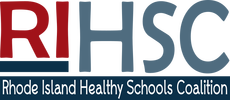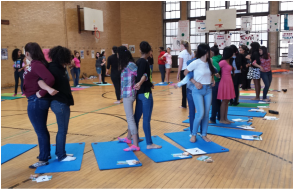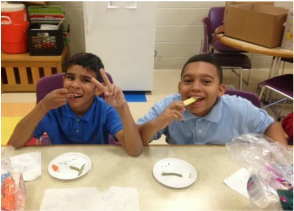communicate & educate
|
Crafting and/or updating your District Wellness Policy is a giant step forward, but it is only the beginning. In order to implement a policy, everyone involved must be aware of its existence, know where to access it, and understand what’s included in it. Be sure to take advantage of every communication method available to your school community to build awareness of the District Wellness Policy.
Communicating in a POSITIVE way is important and can influence the way your message is received. Concentrate more on the benefits of a healthy school and offer positive alternatives and creative ideas as opposed to simply telling people what the policy prohibits. Don’t forget to monitor implementation at all schools and share successes and what’s working well! Two-way dialogue is vital - let stakeholders know how to reach the wellness committee chairperson with questions, comments and challenges they are experiencing. And reach out to the RI Healthy Schools Coalition (info@rihsc.org) if you need help! |
STEP ONE: Identify stakeholders
Stakeholders are people who have an interest in the policy and its outcomes, and/or are responsible for its implementation. Be sure to identify and target all stakeholders, within and outside the school department. All stakeholders need to be informed and educated about the Wellness Policy:
Stakeholders are people who have an interest in the policy and its outcomes, and/or are responsible for its implementation. Be sure to identify and target all stakeholders, within and outside the school department. All stakeholders need to be informed and educated about the Wellness Policy:
|
|
|
STEP TWO: Make your policy accessible
The full Wellness Policy should be easily accessible to everyone. Consider making a dedicated Health & Wellness page on your district website, with the full policy available, as well as other wellness resources.
|
STEP THREE: Summarize your policy and publicize
Consider making a brochure or flyer, highlighting/summarizing the provisions of your policy that can be shared in a number of ways. (Some examples provided below.) You may even consider customizing flyers for each of the stakeholder audiences and share using as many of the following as possible:
Consider making a brochure or flyer, highlighting/summarizing the provisions of your policy that can be shared in a number of ways. (Some examples provided below.) You may even consider customizing flyers for each of the stakeholder audiences and share using as many of the following as possible:
- Recruit students to help spread the word with their peers - they often have creative ideas
- District/school websites—entire policy should be posted; ideally, the district website will have a dedicated Health & Wellness page where summary brochures/flyers are available
- District/school newsletters/newspapers
- District/school listservs
- School handbooks
- District/school social media sites (Facebook, Twitter, Instagram)
- Parent/teacher conferences, Open Houses and other school events
- Backpacks sent home with elementary school children
- Flyers/posters hanging up around school
STEP FOUR: Review communications plan and periodically repeat
Repetition is key—the communication process is ongoing. The current staff, student body and families need to hear the message more than once, and keep in mind that there are always new students and staff to educate. Communicate about the content of the policy, as well as updates on its implementation, including successes and challenges.
Keep track of which communication channels are used and when. Periodically remind stakeholders of the policy, particularly at the beginning of every school year, but also throughout the year. Everyone is juggling many different priorities at once, and the Wellness Policy may not be top-of-mind, which is why it is so important to communicate, communicate, communicate.
Repetition is key—the communication process is ongoing. The current staff, student body and families need to hear the message more than once, and keep in mind that there are always new students and staff to educate. Communicate about the content of the policy, as well as updates on its implementation, including successes and challenges.
Keep track of which communication channels are used and when. Periodically remind stakeholders of the policy, particularly at the beginning of every school year, but also throughout the year. Everyone is juggling many different priorities at once, and the Wellness Policy may not be top-of-mind, which is why it is so important to communicate, communicate, communicate.
resourcesUSDA Local School Wellness Policy Outreach Toolkit
Wellness Policy Communication (RIHSC) Below are examples of communication tools developed by RI districts: Wellness Brochure North Smithfield Public Schools Wellness Policy Toolkit for Principals and School Staff Providence Public Schools Wellness Policy Summary and Implementation Guide for School Staff Coventry Public Schools Flyer for Wellness Policy Changes Glocester Public Schools Health and Wellness Policy Guide East Greenwich Public Schools Wellness Policy Highlights template for customization Wellness Policy Summary for Students and Families version 1 Coventry Public Schools Wellness Policy Summary for Students and Families version 2 Coventry Public Schools District Wellness Committee Recruitment Flyer Coventry Public Schools District Wellness Committee Recruitment Flyer Glocester Public Schools **contact us at info@rihsc.org for district handouts in a customizable format where available |





